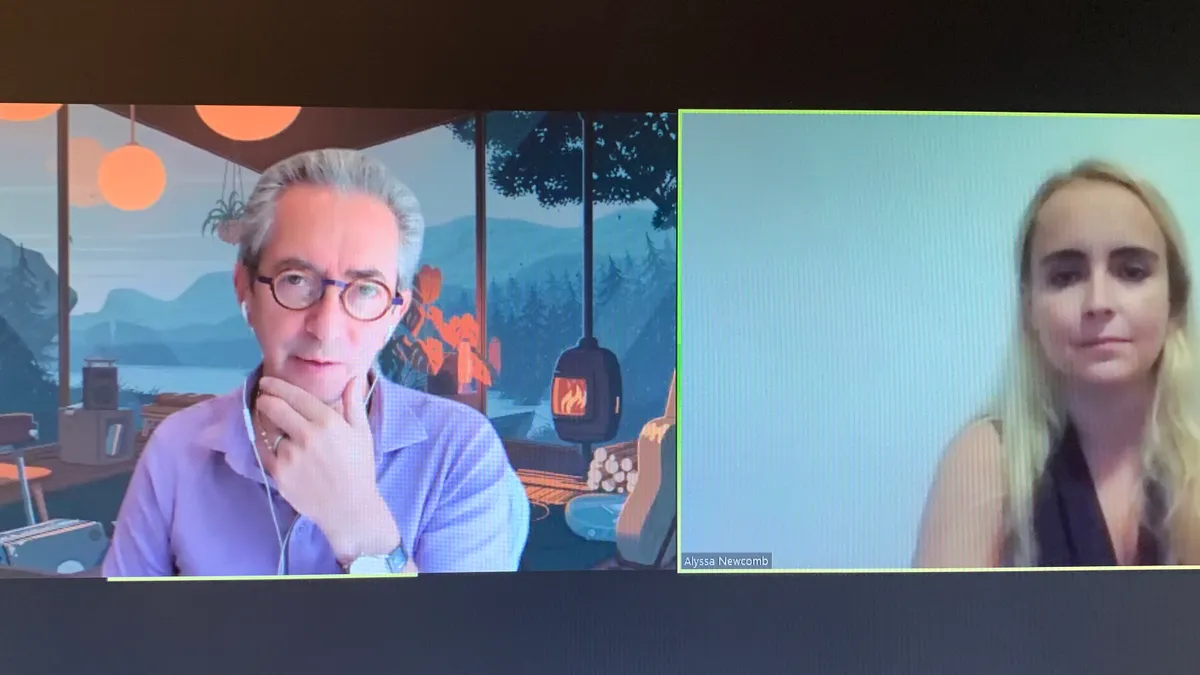Dive Brief:
- The growth Zoom experienced in the spring — increasing daily meeting participants from 10 million in December to 300 million in April — amplified the platform's "responsibility" to global enterprises, said CIO Harry Moseley, during a virtual Resolve event Thursday. "You name the industry, we're in it."
- The initial growth required more customer support from Zoom. The company brought on a third party "to man the phones," and upgraded its FAQ functionality to include a bot that answers questions the FAQ was unable to.
- As users become accustomed to best practices and industries adapt to video-powered remote work, the user experience is up to the user, according to Moseley. "It's incumbent upon you, when you are working from home, to actually think about your day and have planned breaks," said Moseley.
Dive Insight:
Though Zoom is a nine-year-old company, the pandemic added at least another two years to its maturity, Moseley said. "The company is a different company today as a consequence of that growth … We went through a growth spurt."
But Zoom, and platforms like it, have faced criticism during the pandemic.
In March, "Zoom-bombers" bombarded virtual meetings, with the gatecrashers accessing public meeting links. Hackers taking advantage of public meeting links was more of a user error. Still Zoom, took the brunt of the heat.
"Every type of person" and organization joined the platform during that time, said Moseley. "I'd wake up in the morning and there [would] be hundreds of emails from priests saying 'I've got church services on Sunday, can you help?'"
In response to concerns about Zoom's privacy policy, the company clarified it does not use personal user data for marketing or monetary purposes. "We have never shared data, I have no plans to share data. It is not part of our business model," said Moseley. The issue with the Facebook software development kit was agnostic, because the data didn't reveal anything personally identifiable regarding the user.
Zoom CEO Eric Yuan owned up to gaps in Zoom's security. "Fast forward to where things are today, we redefined our end-to-end encrypted service," said Moseley. The company issued a "feature freeze" in April to re-evaluate its issues and onboarded Jason Lee as CISO in June.
Zoom's flaws were not unique. Transport layer security is a common process in transport security that Zoom and its competitors rely on. In July, Zoom extended E2EE to every kind of user, including those using PSTN phone lines.
The current hurdle platforms like Zoom are now facing include organizations taking a more methodical approach to strategy. Companies are past the point of mass adoption, and are working on adopting best-practices. Meeting fatigue, and users favoring emails or phone calls over video meetings, is a current challenge.
"The notion of doing 24-hour, back-to-back meetings in any environment is exhausting. That would never happen in an in-person corporate office," said Moseley.












